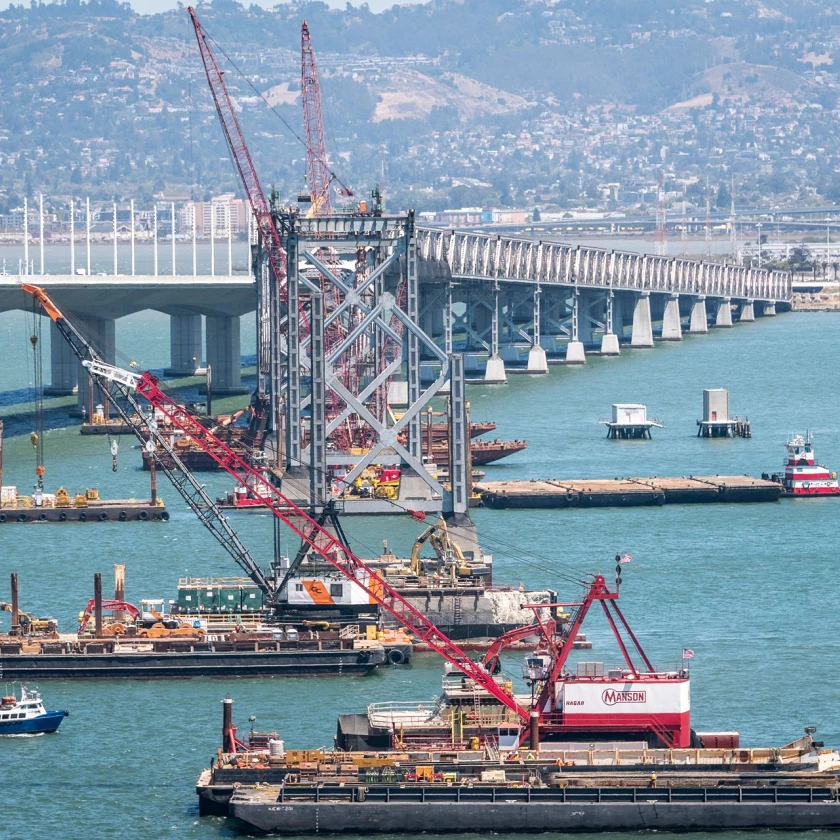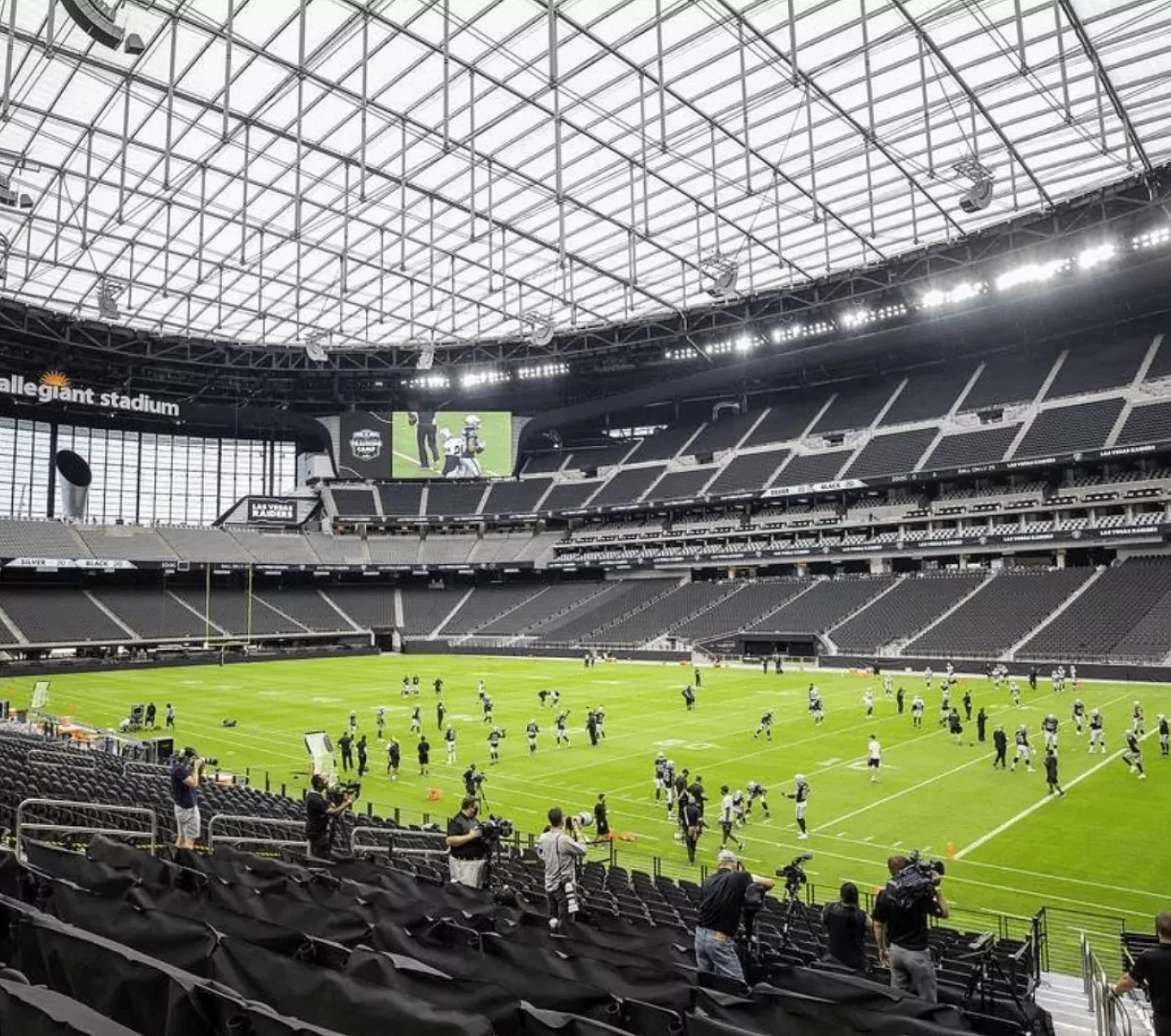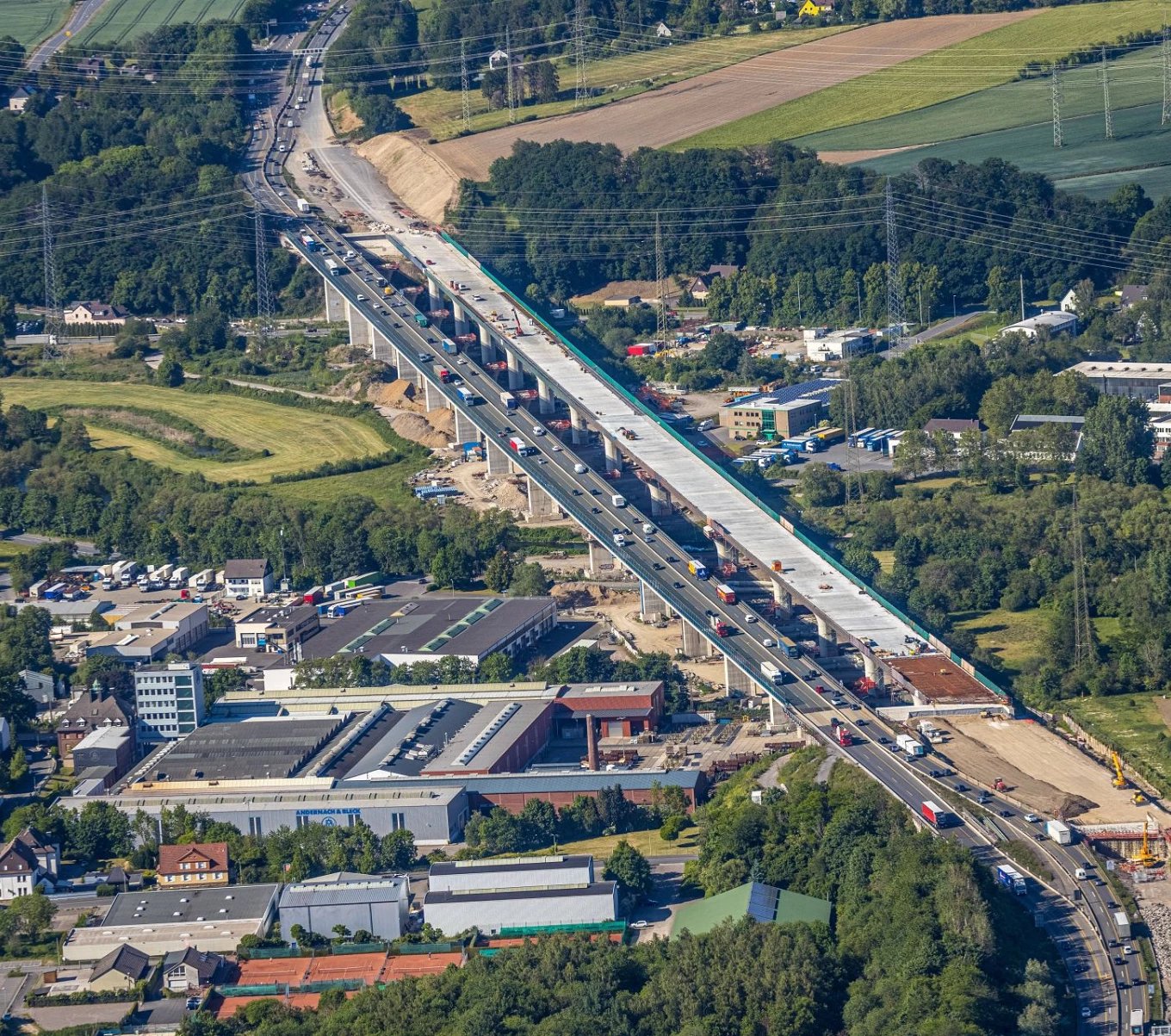
Oakland Bay Bridge Demolition
The Oakland Bay Bridge, which opened to traffic in 1936, was once the longest bridge in the world. It spans a distance of 13.7 km, connecting San Francisco and Oakland. Recognized as a historic structure, it is listed in the National Register of Historic Places as one of the largest and most significant historical bridges in the United States.
In 1999, the west part of the bridge was retrofitted to meet seismic standards over a five-year project. Following damage caused by an earthquake in 1989, the decision was made to replace the entire 3.4 km long eastern segment of the bridge. This new segment opened in 2013, and the historic eastern span was then scheduled for demolition.
Design
Equipment
Four HA-600 strand jacks with a capacity of 6,000 kN each were used to lower the bridge’s steel trusses, along with four additional H-600 strand jacks for necessary tie-back bracing. These semi-automatic strand jacks, featuring systems to control clamping mechanisms, were placed at the four main support points of each steel truss.
A central programmable logic controller (PLC) visualized cylinder strokes, hydraulic pressures, and lowering distances, ensuring precise control. The PLC control system enabled centralized operation, with data connections between the east and west sides of the bridge. Four laser devices with reflectors mounted on the bridge beams ensured precise distance measurements. This system reduced the original timeframe from 14 to 8 months. Removable platforms and automated systems minimized environmental impact and streamlined the lowering process.
Challenges
The steel trusses were part of the bridge’s rigid, riveted construction. Adverse space conditions, working above open water, and restricted erection appliances influenced the execution plan. Accurate load management and structural integrity were critical due to the rigid nature of the riveted trusses.
Process
Before lowering, equipment was preassembled on a staging area, and strand jacks and guides were mounted on removable platforms for easy repositioning. The steel trusses were lowered in five cycles onto barges using the strand jacks. Each steel truss was precisely aligned with laser and steel tape measurements. The process was completed in one day per truss, with an additional day for alignment and transfer onto barges.

In short
Hebetec’s deconstruction process, in collaboration with Freyssinet USA, significantly minimized the impact on the environment and water bodies.
The project was completed in 8 months, well ahead of the original 14-month schedule.
The precision and efficiency of the Hebetec Synchronized Lifting System (HSLS) facilitated the controlled lowering and disassembly of the steel trusses, reducing potential risks and maintaining high safety standards.
Pictures: Sam Burbank
Facts & Downloads
| Year | 2016 |
| Country | USA |
| Number of steel trusses | 5 pcs |
| Length of truss | 154 m |
| Weight per steel truss | 1'600 to |
| Lowering distance | 42-50 m |
| Tye back strand jack H-600 | 4 pcs |
| Lowering strand jack HA-600 | 4 pcs |
| Strand guidance/recoiler | 4 pcs |


















